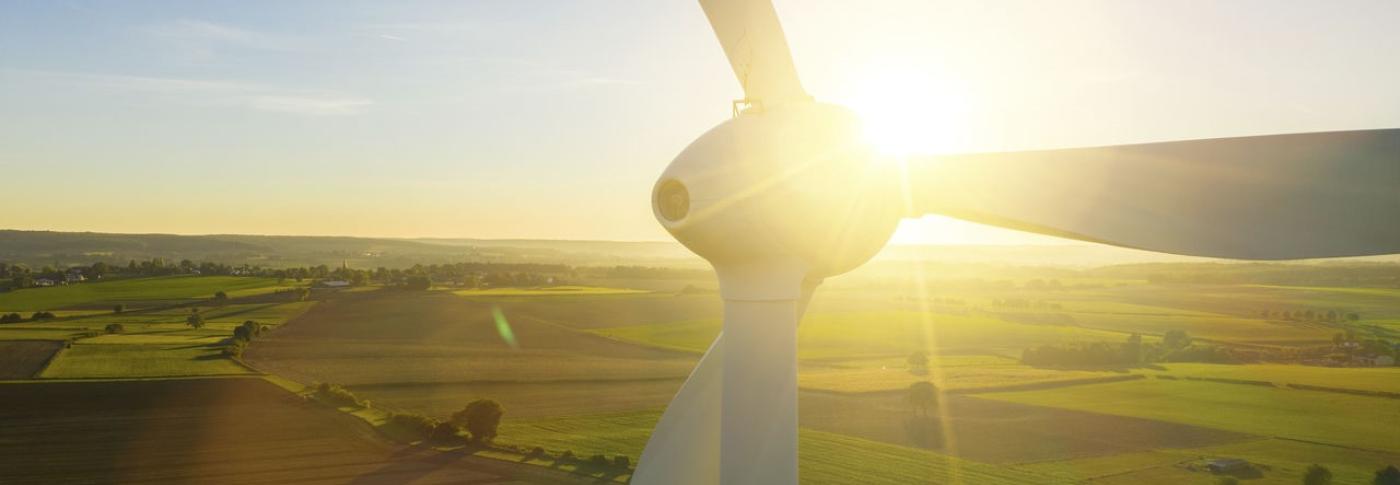The critical role of innovation in delivering a net zero…
27 Mar 2024 - 2 minute read

4 Dec 2020 - 5 minute read
It’s our job to operate the electricity system in Great Britain and deliver safe, secure and reliable power whenever and wherever it’s needed.
We’re also looking to the future and aim to be able to operate the electricity system with zero-carbon by 2025 – which in turn will help the UK reach net zero by 2050 too.
Our pathfinder projects are a key step towards achieving this and the launch of stability pathfinder phase 1 was the first initiative of its kind anywhere in the world.
In this blog our Head of Networks and Chief Engineer Julian Leslie gives an overview of the programme.
Stability is the ability of the system to withstand a network disturbance and continue operating normally. Traditionally, conventional power plants (typically gas or coal) have provided key system and balancing services such as inertia.
Inertia is an object’s tendency to continue in its existing state of movement. In other words, it stays still if it’s still, or keeps it moving if it’s moving. For moving objects, only an external force (like friction) will make it slow down.
This makes inertia incredibly important to the stable operation of the electricity system. Many generators producing electricity for the grid have spinning parts – they rotate at the right frequency to help balance supply.
The kinetic energy ‘stored’ in these spinning parts is our system inertia. If there’s a sudden change in system frequency, these parts will carry on spinning (even if the generator itself has lost power), and slowdown (what we call the Rate of Change of Frequency), while our control room restores balance.
Inertia behaves a bit like the shock absorbers in your car’s suspension, which dampen a sudden bump in the road and keep your car stable and moving forward.
Traditionally inertia has been provided by the spinning power of big coal and gas-fired generators. It is a by-product of burning coal and gas.
Renewables like wind and solar don’t synchronise with the grid in a way that provides inertia, so as the older coal and gas plants come off the electricity system, we need to find new ways to provide stability.
In November 2019, we launched stability pathfinder phase 1. The aim was to increase system inertia.
Phase 1 looked for assets that will draw energy from the grid to power their turbines to spin in sync with the system and create inertia – rather than inertia being a by-product of producing electricity.
In January 2020 we accepted five tender’s worth £328m, which could save consumers up to £128m over the six-year period.
Since then we’ve seen new technology installed and the project beginning to deliver. In July Drax’s hydroelectric pumped storage plant in Cruachan – an incredible facility built inside a hollowed-out mountain in the Scottish highlands pictured below – started providing these vital stability services without generating unnecessary electricity.
At the same time Statkraft announced plans to install synchronous condenser at its stability project at Keith in the northeast of Scotland.
In September construction of another condenser and flywheel began at Welsh Power’s Rassau site in Ebbw Vale and most recently Uniper and Siemens announced their partnership delivering more similar technology at two UK sites.
In June 2020, we launched stability pathfinder phase 2. This next phase focuses on increasing short circuit level in Scotland.
Short Circuit Level (SCL) is the amount of current that flows on the system during a fault (for example from a generator tripping or a lightning strike). We need it to be higher for the flow to recover quickly and stay stable. It’s a critical part of managing voltage and system stability.
As traditional plants like coal and gas are phased out, the transmission system short circuit levels have been falling. Renewable generators like wind and solar connect to the grid in a different way which doesn’t give us the same stabilising properties. In fact, large coal and gas generation create five times more fault current compared to wind and solar. This means we need to find new providers.
Whereas phase 1 required solutions to be synchronous, phase 2 allows a broader range of technology types. This means that we will need to carry out a technical feasibility study as part of the tender process to understand how non-synchronous solutions can meet our technical needs.
It allows wind or solar service providers can tender in, but we’ll need to check that they can do it. If they can, this will be a significant step forward towards our aim of operating a zero-carbon system by 2025.
Phase 3 will take everything we have learnt from phases 1 and 2 but will focus on solving the stability issues in England and Wales.
In addition, we have a number of collaborative innovation projects underway that are supporting our work around stability – including on inertia forecasting, voltage analysis and better tools and techniques for analysing stability on the transmission network.
Together, all of this work is a crucial piece of the puzzle in order for us to meet our 2025 zero carbon operation ambition. Our pathfinders are bringing the stabilising ingredients we need. This means we’ll be much less likely to need to pay renewable generators to reduce their output to make room for power stations that can bring us stability – a saving that is passed on to electricity consumers.
This new thinking, and our new approach to boosting the resilience of our electricity system, is bringing us a big step closer towards achieving our zero carbon goals.